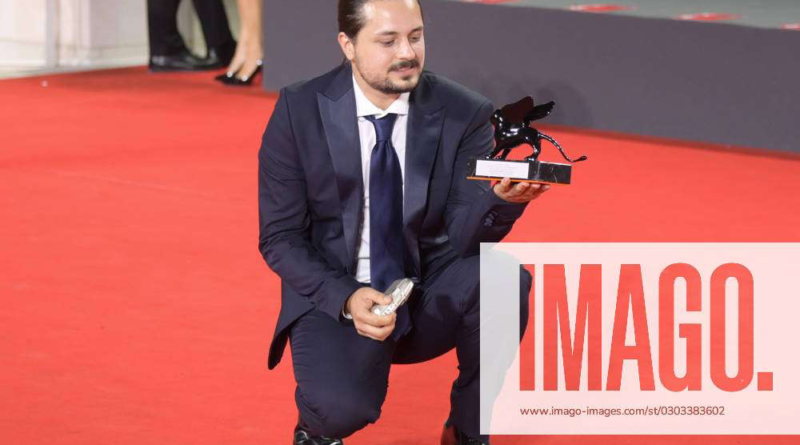TIFF 2023 Interview “Filmmaker Alain Parroni- An Endless Sunday”
The Extra Mile sat down with filmmaker Alain Parroni, who wrote and directed the film. Parroni visits Toronto for the first time to debut An Endless Sunday at TIFF after taking home the Horizons Special Jury Prize Award at the Venice Film Festival earlier this month. When talking about what Parroni does in his own time to go the extra mile, he references his love for taking photos and how he’d been enjoying snapping some here in Toronto of all the skyscrapers. After chatting about photography and architecture, we jumped right into discussing the film.
There will be spoiler warnings when necessary!
Disclaimer: This interview was interpreted by a professional translator and therefore the following responses are paraphrased and inexact.
TEM: What inspired you to make this film and tell this specific story?
PARRONI: This first feature was meant to glorify what one can put together after their upbringing as a student of cinema. Now, I realize some of my very real adolescent feelings are present in the movie… but that wasn’t consciously premeditated. I worked on An Endless Sunday after I graduated film school, so I didn’t know at the time that I would subconsciously put so much of my own experience as a teenager into the movie. But it did turn out to be a story of how I felt during my adolescence and I recognize that now. But only after the process was completed.
TEM: In the movie, there is a lot of symbolism. The scenes and shots are each so beautiful. Bellissimo! I’d love to know if you had all of these shots in mind while writing or did those decisions come together while filming. What was the relationship like between you and your cinematographer Andrea throughout the creative process?
PARRONI: The relationship with Andrea was especially important. We’d looked at working with other cinematographers who might’ve been more experienced but they would’ve been a little bit older. We wanted someone our age because we wanted someone who’d have flexible availability, like being able to work on weekends or spontaneously. This was also a very intimate project, so we needed somebody who we felt was in symbiosis with us and our version of youth. Someone who could even go off and do things on their own, not necessarily planning that their vision would be in line with mine but it just turning out to be. I drew a lot of the shots beforehand and had them clearly plotted in my mind. My studio was actually full of the drawings, the colours, the scenes… it was all very consolidated from the beginning. But in other cases, I let the actors be free to do a little bit of what they wanted to. When specifically speaking about my relationship with Andrea—the scene at the beach during the fight, there were two cameras. We shot it with Andrea behind one and me behind the other. That was a symbiotic dance between us and was probably the instance where we were most in sync, especially since the scene is one continuous shot.
TEM: Was there a story you were trying to tell with the visuals and the symbolism? Or were the visuals meant to be a general commentary on your personal outlook or perspective on the world during your adolescence?
PARRONI: For someone growing up in Italy religion is a focus and can leave a mark subliminally, even if you don’t practice it directly. It still leaves an impact subconsciously due to how big of a role it plays in our society. There is definitely a lot of that symbolism in the film, but it’s not all necessarily premeditated. Some of it I only recognized after ending the film. I realized some symbols that touched me as an adolescent I’d subconsciously included. On the other hand, there are intended visuals for instance that only those who are really close to me might notice. My birthday is hidden somewhere in the film, so maybe my parents might notice that. But there are a lot of other symbols present in the film that have touched the lives of so many different adolescents throughout generations in Italy. The purpose there is so that they would share the recognition of these symbols in the same way I do and have, and as a result feel the same things I felt.
Spoilers for An Endless Sunday start now.
TEM: One example of symbolism that really stood out to me was the bright red flower being spray-painted black. Although it’s an interesting shot on its own, when reaching the end of the film it definitely makes sense as to what that shot—and those like it—really mean. How does that symbolism play into the central message of the film?
PARRONI: It’s a juxtaposition meant to show how youth see using violence as a way to leave a mark on this planet when there are no other tools to use. That’s the reason the spray painting of the flower relates to the shooting at the end. Violence is something kids often revert to because they feel compelled to make a statement in the world but don’t know how to make any noticeable difference.
TEM: Was the ending always the way it plays in the film or did it evolve in any way through the process?
PARRONI: We had always included those story elements that culminated at the end. Initially, the shooting had more focus when we first wrote the script and not so much the birth of the child. But then what we decided to do was take it down a notch with the shooting and focus more on the birth because it’s an equally violent act but more important to the message and the story.
TEM: From the moment you started writing the script to the last day on set, were there any surprises throughout the process that ended up changing the film for the better?
PARRONI: Well, one aspect of the film that definitely surprised us and gave it more dimension was Zack’s performance as Kevin. We found ourselves very lucky to have gotten him because he does solidify the vision I wanted to bring to the movie. I would leave him free to just roll with it and he’d come up with some amazing stuff whenever I gave him that freedom. I really think he brings something extra to the movie that we’re very grateful for.
TEM: The film discusses the idea of reincarnation and communicates themes of life going on despite the various times it may feel it ends and restarts throughout one’s existence. Was this the message you wanted people to leave the film with or is there something else that you want audiences to interpret when watching?
PARRONI: When movies are made, it is a little like a child that grows and reproduces. It has that element of reincarnation because movies have immortal power. One might watch a movie and have it completely change how they feel about or look at life. That is a form of rebirth or reincarnation. You’ve become somebody new. As we take home a message from a movie, we might push others to be reincarnated somehow once they learn the message themselves. It may change their lives or perspective completely. When we implement that message in the films or artwork we create thereafter, that same message or idea is now being reincarnated through different forms of art. In some cases it may be subconscious—like in my case—but still ends up changing how we make the art. And changing how we live our lives. That is ultimately the message of An Endless Sunday.
Fandango – Alcor – Art Me Pictures
Writers: Alain Parroni, Guilio Pennacchi, Beatrice Puccilli
Starring: Enrico Bassetti, Zackary Delmas, Lars Rudolph
Won Award at Venice Film Festival
An Endless Sunday premiers at The Toronto International Film Festival on Sept 11th at 11:30am at Scotiabank theatre
[Review by guest blogger Jurgen Sosa]

